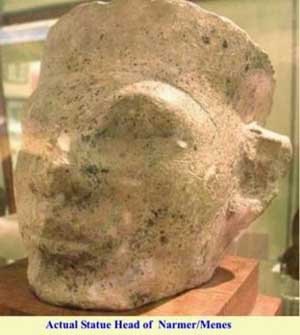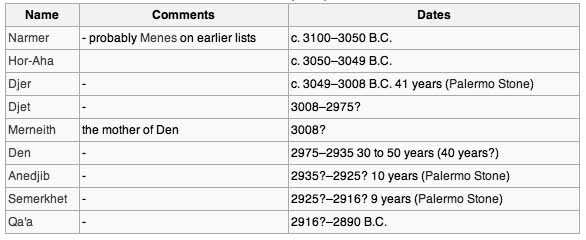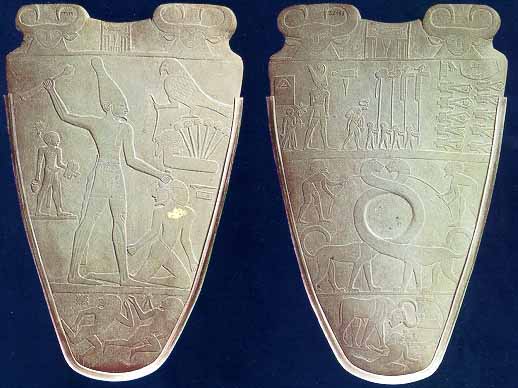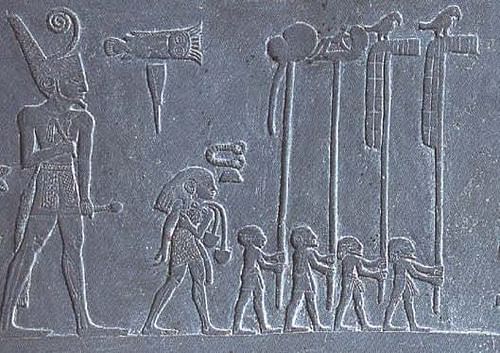Nare Mari also known as Aha-Mena or Narmer is regarded as the first pharaoh of a united Egypt who ruled over the Upper and Lower territories in the 32nd Century BC.
Some historians reckon the origins of the Egyptian civilizations are found in the great lakes region of East Africa and Central Africa.
Others posit that Dynastic Egypt was founded by the Egyptians themselves as people who moved from the south into the Nile Valley, from the western and eastern deserts and the northeast.
They contend the society was ethnically mixed and according to Toby Wilkinson, one of the leading researchers of prehistoric and Early Dynastic Egypt: “…At its most fundamental, pharaonic civilization is an Egyptian, indeed an African phenomenon.”

While the kingdom of Egypt grew from tribal societies scattered throughout the Nile Valley with the tribal origin preserved in the complex and varied religion of pharaonic Egypt, the identifiable socio-political traits of the original tribes quickly disappeared once state formation was achieved such that the king and nobles and other elites presented themselves not as members of a particular tribe, but as the ruling class of the kingdom. Abydos remains one of the most ancient cemeteries of Egypt and the first royal cemetery.
Narmer (probably Menes) is said to have been the first to wear both the white and red crowns. He is also believed to have reigned for 62 years founding Memphis at the junction of Upper and Lower Egypt. Some believe he consolidated his positions in Gaza improving upon the efforts of his predecessors who partly controlled the Near East.
While some contend Narmer (Ancient Egyptian – “Striker”), is the successor to the pre-dynastic Serket, some archaeologists contend Serket is actually identical with Narmer. Like other First Dynasty Kings, his name is a single word (“The Striker”) and may be shorthand for “Horus is the Striker.”
It should be noted that the First Dynasty of ancient Egypt is often combined with the Second Dynasty under the group title, Early Dynastic Period of Egypt with Thinis as the capital.

Information about this dynasty is derived from a few monuments and other objects bearing royal names, the most important being the Narmer palette and macehead as well as Den and Qa’a king lists. No detailed records of the first two dynasties have survived, except for the terse lists on the Palermo stone. The hieroglyphs were fully developed by then, and their shapes would be used with little change for more than three thousand years.

Narmer’s victory over the northern king is immortalized by Narmer’s Palette discovered in 1898 in Hierakonpolis. It shows Narmer displaying the insignia of both Upper and Lower Egypt, giving rise to the theory that he unified the two kingdoms. Narmer’s wife is thought to have been Neithhotep A, a princess of northern Egypt. Inscriptions bearing her name were found in tombs belonging to Narmer’s immediate successors Hor-Aha and Djer, implying either that she was the mother or wife of Hor-Aha.
His tomb is thought to have been consist of two joined chambers (B17 and B18) found in the Umm el-Qa’ab region of Abydos.
Large tombs of pharaohs at Abydos and Naqada, in addition to cemeteries at Saqqara and Helwan near Memphis, reveal structures built largely of wood and mud bricks.

Human sacrifice was practiced as part of the funerary rituals associated with all of the pharaohs of the first dynasty. It is clearly demonstrated as existing during this dynasty by retainers being buried near each pharaoh’s tomb as well as animals sacrificed for the burial. The tomb of Djer is associated with the burials of 338 individuals. The people and animals sacrificed, such as donkeys, were expected to assist the pharaoh in the afterlife. For unknown reasons, this practice ended with the conclusion of the dynasty, with shabtis taking the place of actual people to aid the pharaohs with the work expected of them in the afterlife.
Seals impressions discovered by G. Dreyer in the Umm el-Qa’ab from Merneith and Qa’a burials identify Hor-Aha as the second pharaoh of the first dynasty. Hor-Aha probably ascended the throne in the late 32nd century BC or early 31st century BC. According to Manetho, he became pharaoh at about the age of 30 and ruled until he was about 60 years old.
Hor-Aha seems to have conducted many religious activities. A visit to a shrine of the goddess Neith is recorded on several tablets from his reign.
The tomb of Hor-Aha is located in the necropolis of the kings of the 1st Dynasty at Abydos, known as the Umm el-Qa’ab. It comprises three large chambers B10 B15 and B19 which are directly adjacent to Narmer’s tomb. The chambers are rectangular, directly dug in the desert floor, their walls lined with mud bricks. The tombs of Narmer and Ka had only two adjacent chambers, while the tomb of Hor-Aha comprises three substantially larger yet separated chambers. The reason for this architecture is that it was difficult at that time to build large ceiling above the chambers. Moreover timber for these structures often had to be imported from Palestine.










